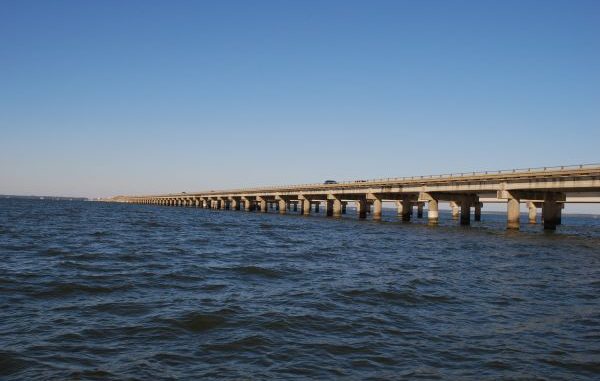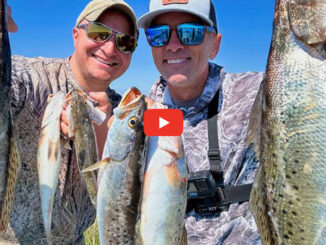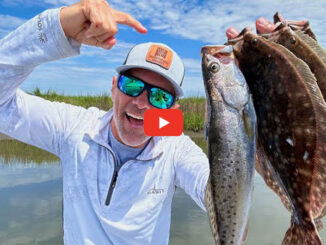
To first-time anglers fishing the twin Causeway Bridges, the spans seem to stretch from here to eternity in both directions. They are long — 24 miles long — and everything seems the same.
But it isn’t.
The “poles” as the bridges’ concrete pilings are referred to by fishermen, are set in pairs under the southbound (western) span and in trios under the northbound span.
The gap between each set of poles is also different. Sets of poles are spaced substantially closer together under the southbound span. Dumas prefers to fish under the southbound span. The closer spacing of the sets of poles means he wastes less time trolling from set to set without casting.
More casts mean more fish.
Each pole has its own little geography, as well. Veteran Causeway Bridge speckled trout fishermen cast to all four sides of each pole until they can determine a pattern of where the fish are holding. After they establish a pattern, they will concentrate casts on that corner on subsequent poles.
Dumas believes the very best spot over time is the northeast corner of the outside poles on the southbound span.
On a larger geographical scale, the bridges are broken into four-mile segments by “crossovers,” links between the two spans that allow vehicles on the bridges to cross over to the other span and reverse travel direction.
The bridges also have “humps” where the bridges are elevated above their normal 15-foot clearance to allow for vessel traffic. These are also spaced four miles apart. Little humps clear the water by 25 feet; big humps soar to 50 feet.
Dumas numbers them starting on the northshore, his base of operations. Four miles out are the four-mile crossover and the four-mile hump (little). Eight miles out are the eight-mile crossover and the eight-mile hump (big). At 12 miles are the 12-mile hump and crossover (little). Next are the 16-mile crossover and a big hump crowned by a drawbridge.
One final crossover and little hump are located at 20 miles from the northern shore of the lake.
Dumas acknowledged that anglers from the lake’s south shore may number the crossovers and humps differently, but he said northshore anglers pretty much stick to the same terminology he uses.


